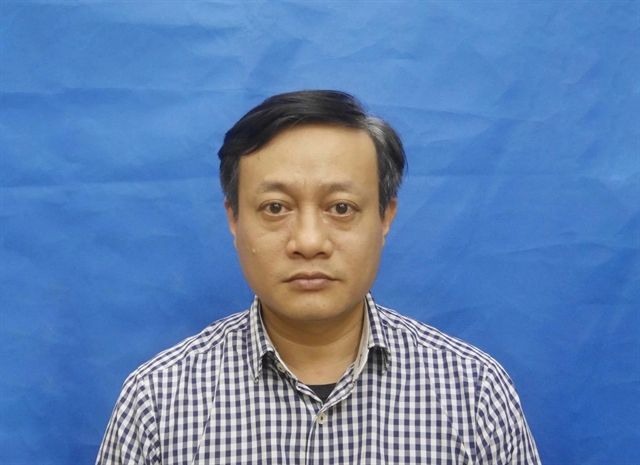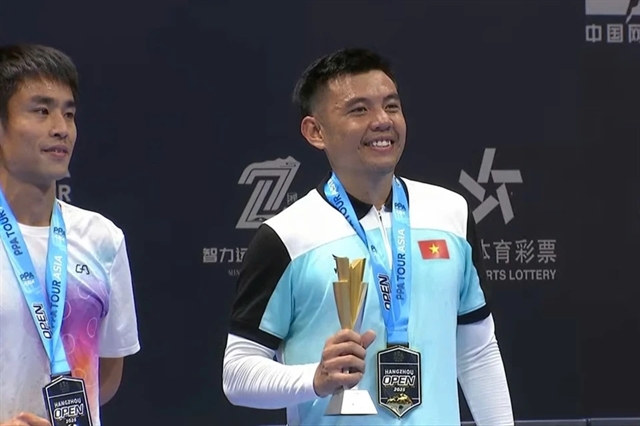 Politics & Law
Politics & Law
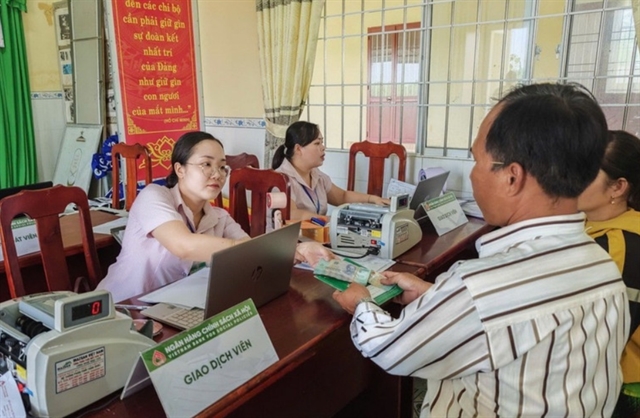
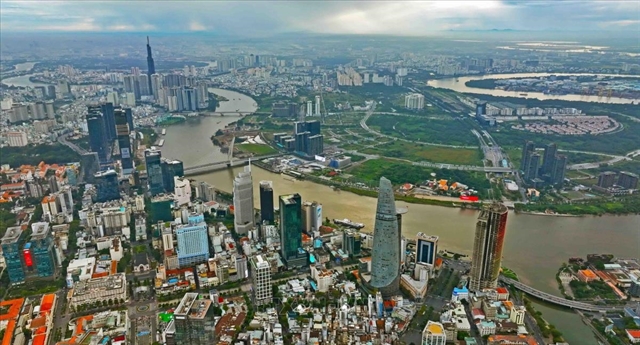
|
| A view of HCM City, the country’s leading hub for economics, culture and tourism. – VNA/VNS Photo Vũ Sinh |
HCM CITY – The Party Organisation of HCM City led and maximised the role of government and strengthened public consensus during the 2020–25 tenure, enabling the city to overcome challenges, fulfil political tasks, and lay a foundation for future development.
Between 2020 and 2025 the international and domestic situations presented both opportunities and difficulties.
The fourth industrial revolution advanced rapidly, while the COVID-19 pandemic had severe impacts on the economy, society and people’s lives.
The city had limited resources and development space, persistent institutional obstacles and frequent shuffles of key officials.
The draft political report for the first Congress of the HCM City Party Organisation for the 2025–30 tenure, to be held on October 13–15, noted that in this context, with its tradition of solidarity, dynamism and creativity, the HCM City Party Organisation successfully led government efforts, built public unity and achieved major socio-economic goals, creating a solid foundation for the next stage of development.
Economic development
In the 2020–25 term, after implementing strong measures and mobilising all resources to overcome the COVID-19 pandemic, HCM City’s localities focused on reviving production.
From a sharp decline, the economy rebounded quickly, regaining growth momentum and gradually stabilising. This was achieved through reforming the growth model, restructuring the economy, applying science and technology, and promoting innovation.
Under the national administrative reform on July 1, Bình Dương and Bà Rịa–Vũng Tàu provinces were merged into HCM City.
During this period (2020–25) Bình Dương underlined its position as a major industrial hub, focusing on transforming industrial parks, attracting investment and implementing high-tech industrial projects linked with urban development.
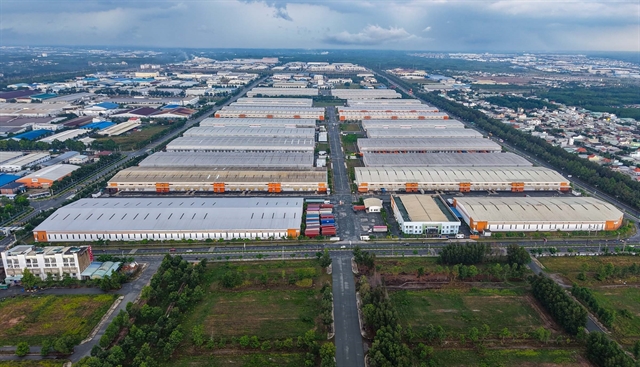
|
| A view of the Vietnam – Singapore II Industrial Park (VSIP II) in the former province of Bình Dương (now part of HCM City). – VNA/VNS Photo Hoàng Hiếu |
Meanwhile, Bà Rịa–Vũng Tàu developed rapidly and steadily, relying on industry, logistics, seaports, tourism, and high-tech agriculture.
It also established new key sectors such as petrochemicals, renewable energy and a liquefied gas and biotechnology hub.
The former HCM City maintained its role as the driving force of the special urban area. It remained the country’s leading centre for economy, culture, finance, trade, services, science, technology, innovation, and human resource development.
The expanded HCM City achieved most socio-economic targets in the 2020–25 term.
The city’s GRDP is estimated at VNĐ3,000 trillion (US$113.6 billion) in 2025, 1.4 times the 2020 number and accounting for 23.1 per cent of the country’s GDP.
Its per capita GRDP is 1.7 times the national average. Its revenues topped VNĐ737 trillion ($27.9 billion), equivalent to 33.4 per cent of the country’s total.
Service sectors advanced towards modernisation, with trade and service quality improving significantly.
The domestic consumer market and import–export activities maintained stable growth.
Industry prioritised high-tech sectors, modernised existing ones and fostered key industries while increasing indigenisation.
Construction progressed with modern projects using environmentally friendly materials.
Agriculture moved towards urban, ecological and organic models, embracing technology and reducing greenhouse gas emissions.
Livestock production shifted to farm scale, while aquaculture and seafood processing were reorganised towards sustainability.
The financial, monetary and capital markets expanded their role. The science and technology market grew, helping enterprises adopt new technologies, enhance productivity and strengthen competitiveness.
The labour market recovered quickly after the pandemic, and the real estate market more gradually.
Resources were used more efficiently, particularly land, which was reallocated to expand infrastructure, industry, and services.
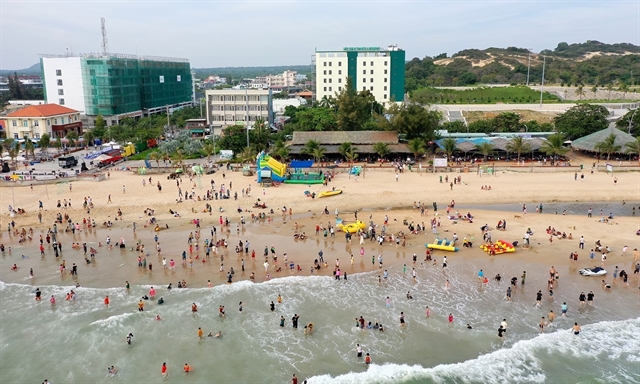
|
| Hồ Tràm public beach in the former province of Bà Rịa – Vũng Tàu (now part of HCM City). – VNA/VNS Photo Huỳnh Sơn |
Socio-cultural development
In the 2020–25 term education and training achieved positive results in both scale and quality, moving towards international integration and comprehensive reform.
Investment in infrastructure was maintained, and there was a strong focus on improving teachers and administrators.
Digital education platforms were expanded, administrative reform advanced and several pioneering policies were introduced.
Healthcare was strengthened through mobilising social resources and investing in facilities, equipment and human resources.
The healthcare system improved in preventive and primary care, specialised services and epidemic response.
The number and quality of medical personnel increased.
Cultural, literary and artistic activities received focused investment. Cultural facilities were built and traditional values were preserved.
Many festivals were maintained, expanded and developed to serve both tourism and the local community.
The media and publishing system was streamlined, while professional sports received greater investment and continued to deliver international achievements.
Social security policies were implemented effectively, with emphasis on job creation and expanded social and health insurance coverage.
Comprehensive support was provided for people with meritorious service, policy beneficiaries, social protection groups, and those affected by COVID-19.
The poverty reduction programme achieved strong results, with all poor and near-poor households gaining access to basic services. The movement with meaningful activities expressing “Gratitude” expanded widely and effectively.
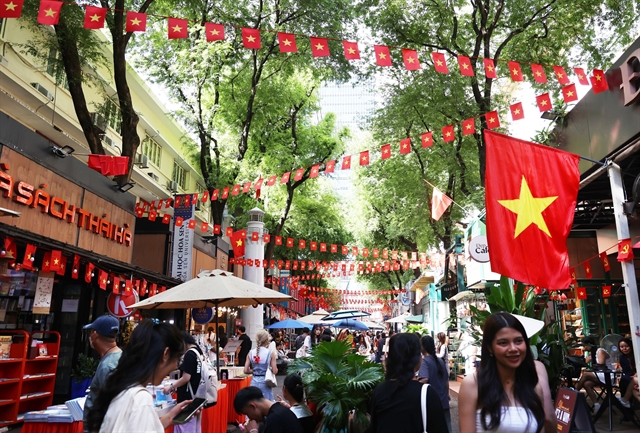
|
| HCM City’s Book Street on Nguyễn Văn Bình Street in Sài Gòn Ward was beautifully decorated for National Day (September 2) this year. – VNA/VNS Photo Hồng Đạt |
Building Party, Government
In the 2020–25 period, Party-building in terms of politics, ideology and ethics was comprehensively strengthened, with timely regulations for education, discipline and integrity.
Organisation and personnel management improved, supported by transparent procedures, stronger supervision and consistent anti-corruption measures.
Inspection work was renewed, coordination among agencies was enhanced, and oversight by the People’s Council, the Việt Nam Fatherland Front, socio-political organisations, and the public was strengthened for greater accountability and effectiveness.
The government apparatus at all levels was consolidated, linked with building urban administration and a professional civil service.
People’s Councils achieved notable progress in both scale and quality, especially in making key policy decisions, renewing supervision, expanding democracy, and responding to voters’ petitions.
People’s Committees and administrative agencies reformed their working styles, becoming more dynamic and flexible in management.
Restructuring of administrative units and building a two-tier local government model were implemented decisively.
Early results included decentralisation, clearer powers, stronger accountability, faster digital transformation, and more public participation.
Administrative procedures were simplified, public services were improved and governance was enhanced to support economic growth and socio-political stability.
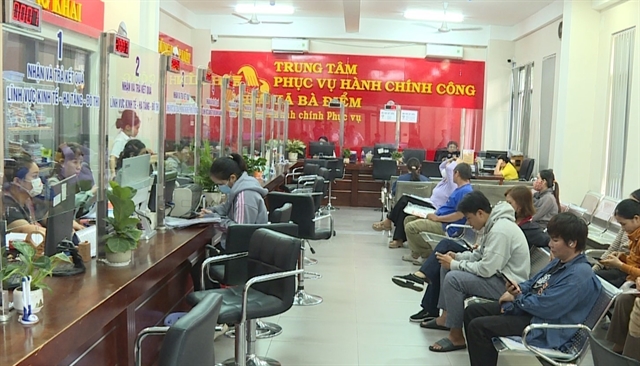
|
| Staff at the Bà Điểm Commune Public Administration Service Centre in HCM City work through lunch hour to process administrative documents received from the public. – VNA/VNS Photo Hữu Duyên |
Military, defence and security tasks were directed comprehensively. The city led in rescue operations, disaster prevention and epidemic control, while reducing crime and maintaining political security and social order.
External and international cooperation expanded across Party, State and people-to-people channels.
Promoting potentials, strengths effectively
The draft political report noted that during 2020–25 the potentials and strengths of each locality were harnessed effectively, leading to some remarkable achievements.
The city’s three localities (the former HCM City, Bình Dương and Bà Rịa–Vũng Tàu) continued to maintain their roles as major economic centres, contributing significantly to the Government’s revenues.
Their ecosystems in services, tourism, industry, logistics, start-ups, and innovation developed strongly.
They also led in digital governance and institutional reform, shaping a pioneering urban region that promoted development not only through speed of growth but also through management quality and sustainable models.
Strategic breakthroughs in infrastructure, digital transformation, science and technology, and human resources were effectively implemented, yielding important results.
The city proposed several special mechanisms and policies, prompting the Politburo to adopt key decisions.
Regional connectivity saw a notable shift in thinking and action.
HCM City actively promoted regional cooperation, asserting its role as a driving force in development linkages.
It focused on strategic breakthroughs in transport infrastructure and human resources, creating momentum and new growth space for the southeast, Mekong Delta and other regions.
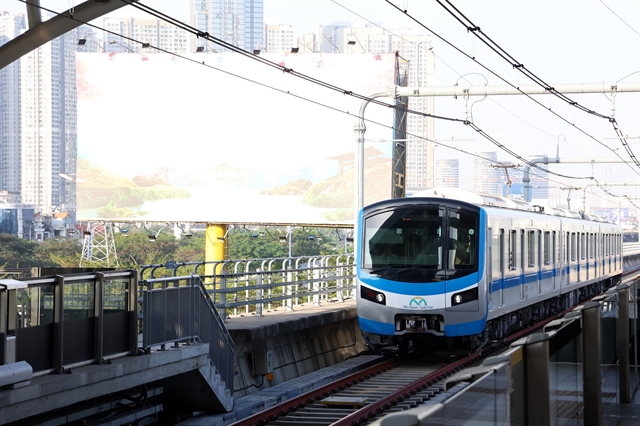
|
| Metro Line 1 (Bến Thành – Suối Tiên), 19.7 km long, linking central and eastern HCM City, began operation in December 2024. – VNA/VNS Photo Hồng Đạt |
These achievements were possible because the city’s localities consistently received close and comprehensive leadership, guidance and effective support from the Party Central Committee, the National Assembly, the Government, and ministries.
The city’s Party Committees at all levels remained steadfast, united and consistent, upholding the Party’s principles, discipline and regulations, while promoting democracy and leading by example.
They persisted in educating officials and Party members, and in building and rectifying the Party.
The aspirations of the political system, the public and the business community were effectively encouraged and harnessed.
Leadership and administration were renewed, with creativity and timely implementation of Party resolutions translated into concrete programmes and action plans.
Tasks and solutions were linked with supervision, inspection and encouragement of dynamism and creativity among officials and civil servants.
The city also mobilised the great strengths of national unity, drawing valuable contributions from the people, businesses, experts, scientists, intellectuals, and overseas Vietnamese. – VNS


